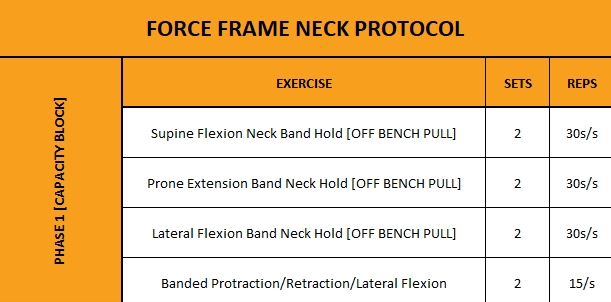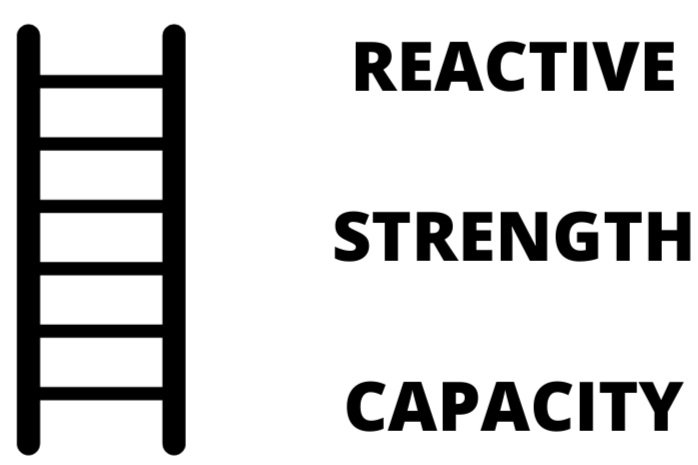BUILDING A STRONG NECK PART 1
BUILDING A STRONG NECK
With the recent acquisition of our Vald ForceFrame, it was the perfect opportunity to run a little case study on improving neck strength. The Vald ForceFrame provides the option of measuring strength for flexion, extension, and lateral flexion. I measured the neck strength of 4 athletes (2 male (1 BJJ, 1 MMA) and 2 female (2 Boxing)) with the aim of running a 3 phase neck protocol.
WHY IS NECK STRENGTH IMPORTANT?
· Neck strength equates to:
Greater Absolute Force
Greater Muscle Cross-Sectional ARea
Greater Tensile Stiffness
Greater Rapid Torque
Previous research has shown that “every one pound increase in neck strength leads to a decrease in five percent chance of sustaining a concussion” [1]. In addition, poor isometric neck extension strength has been shown to be a risk factor for concussion [2]. Therefore, it is justified that athletes who compete in a sport involving contact will likely need robust and sturdy necks. It is important that athletes are able to develop peak forces maximally and quickly to ensure they are able to resist large magnitudes of acceleration of the neck.
THE TESTING
Athletes were instructed to maximally “push” into the ForceFrame paddles for 3 seconds for 3 repetitions for 1 set in a quadruped position.
The maximal force value was then obtained from this testing.
THE PROTOCOL
The first part of this protocol involves building capacity in the neck through isometric holds and higher repetition ranges. During this block, the aim is to induce muscle hypertrophy and endurance to the musculature of the neck. This will provide a foundation for more intensive blocks which will involve maximal strength and reactivity.
A STAGED EXERCISE PROGRESSION
I have been currently experimenting with an isometric banded hold off a bench pull in 4 positions for our participating athletes. This is shown in the video below. This variation may seem easy but is actually incredibly challenging when you apply the right intensity to the bands.
The next exercise is one we commonly use here at Ethos Performance which involves isotonic movement of the neck in all planes incorporating protraction, retraction and lateral flexion.
CONCLUSION
In the subsequent blog parts I will provide updates on the values obtained by these athletes and progressions used. Looking forward to seeing how this experiment plays out!
REFERENCES
Collins, C. L., Fletcher, E. N., Fields, S. K., Kluchurosky, L., Rohrkemper, M. K., Comstock, R. D., & Cantu, R. C. (2014). Neck strength: a protective factor reducing risk for concussion in high school sports. The Journal of Primary Prevention, 35(5), 309-319.
Farley, T., Barry, E., Sylvester, R., De Medici, A., & Wilson, M. G. (2022). Poor isometric neck extension strength as a risk factor for concussion in male professional Rugby Union players. British Journal of Sports Medicine.



